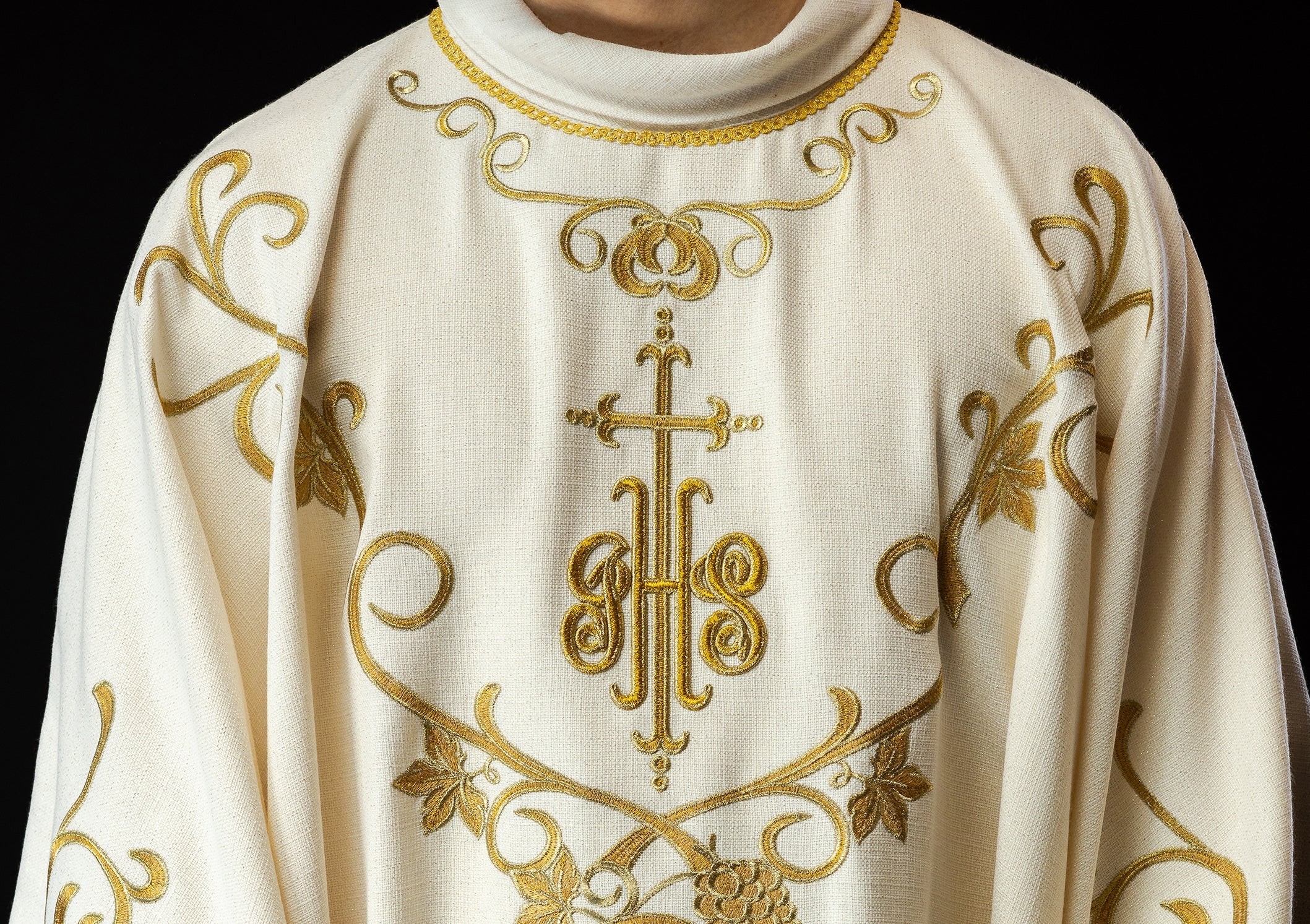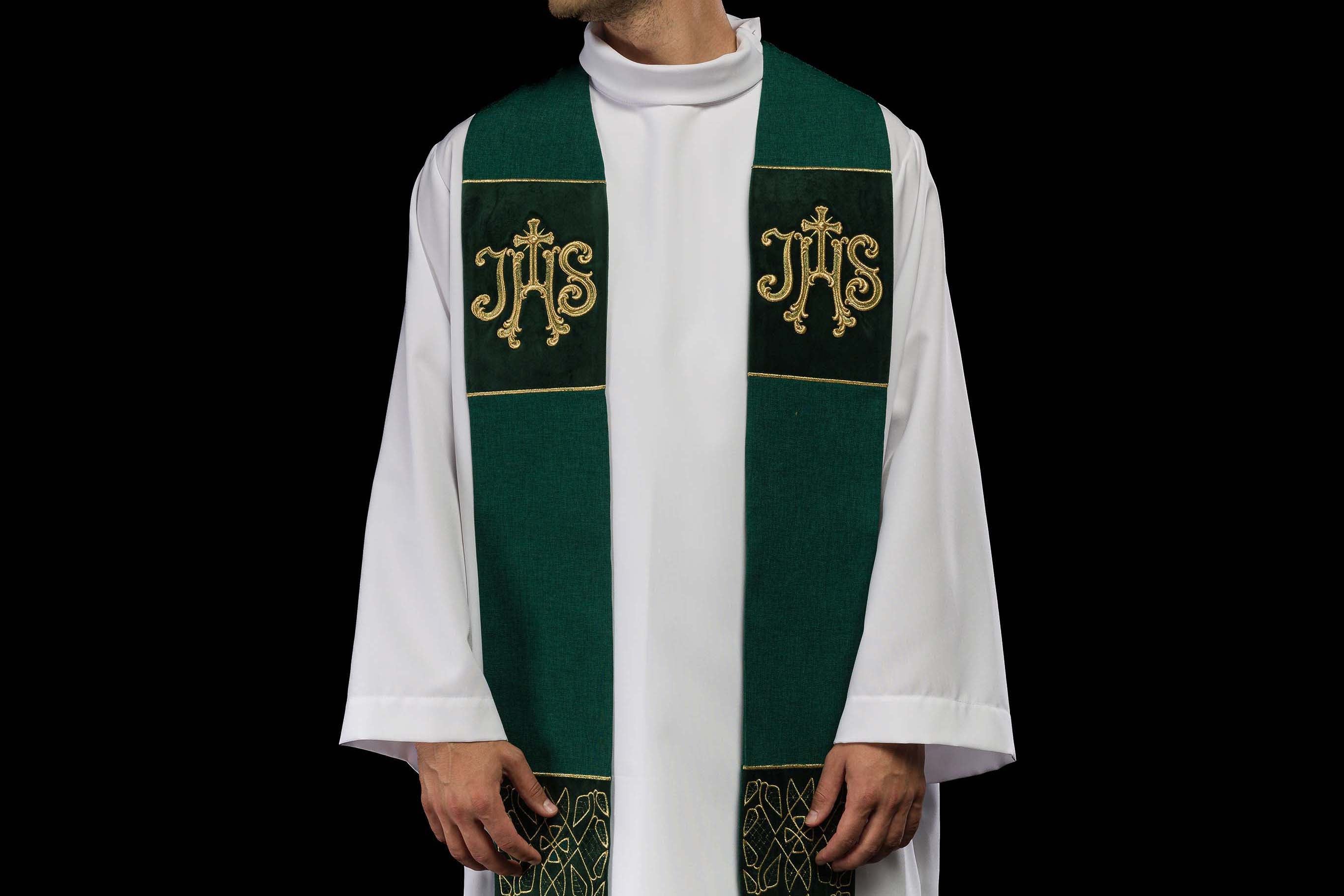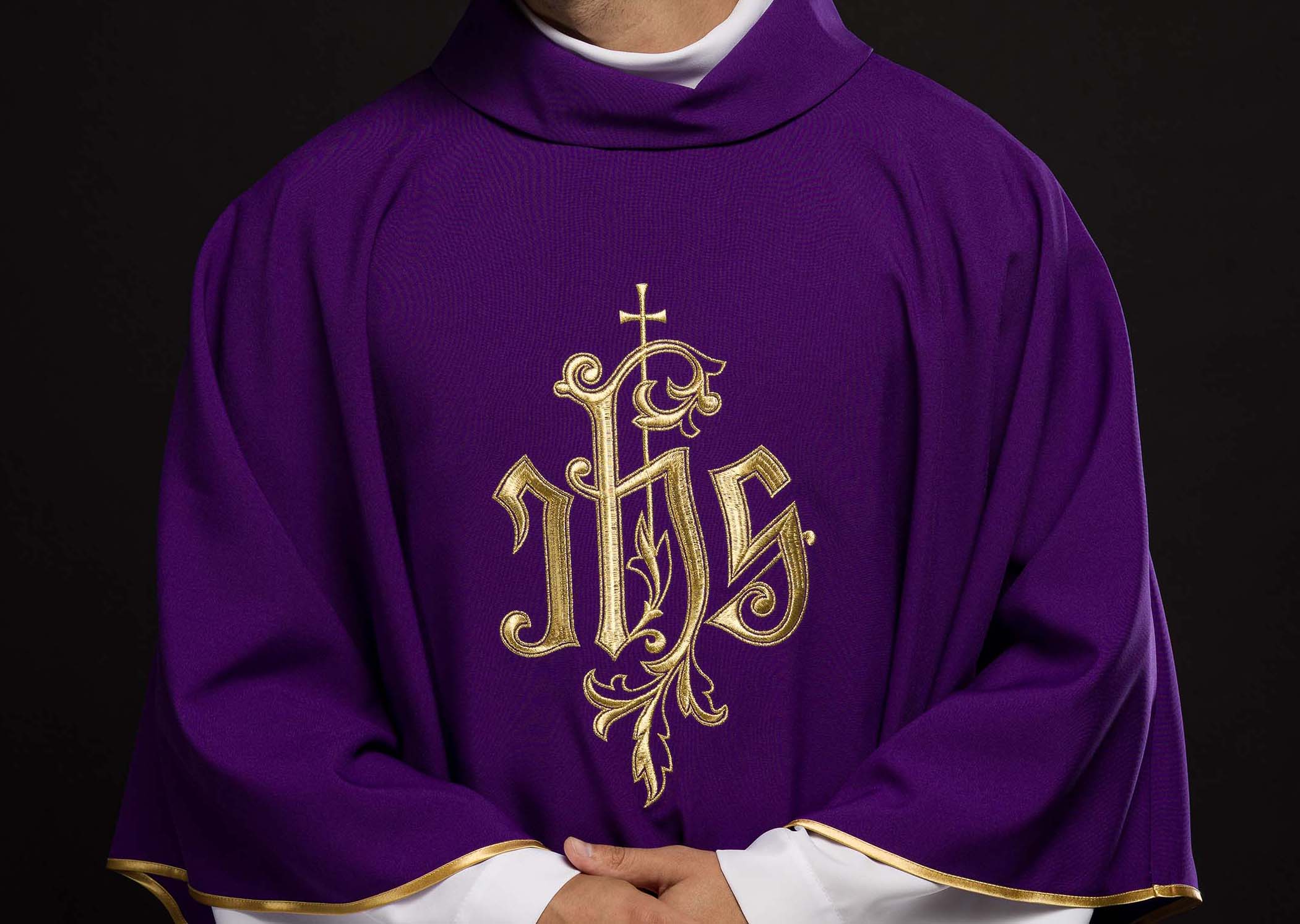
The Correct Liturgical Vestments for a Priest – What Does the Instruction Say?
Correct Liturgical Vestments for a Priest – What Does the Instruction Say?
The vestments of a clergyman during the liturgy are an extremely important element that symbolizes the sanctity of the rites and emphasizes the role of the priest as a servant of God. Both tradition and the official documents of the Catholic Church specify what vestments should be used during Mass and other services. Understanding these rules is crucial for every priest, as well as for the faithful who wish to participate more deeply in the liturgy.
What Shapes the Rules of Liturgical Vestments?
Historical Roots of Liturgical Vestments
The current liturgical vestments come directly from ancient Roman garments. During the times of persecution of Christians, the clothing of clergymen did not differ significantly from that of ordinary citizens. However, with the development of the Church and its establishment in society, symbolic meaning began to be given to individual elements of clothing. For example, the tunic became an alb, and the cloak became a chasuble (ornate). Each vestment received a new, spiritual message, referring to the mysteries of faith and the priestly function.
The Role of Instructions and Church Documents
The Church, as a living and developing institution, has a number of documents that regulate various aspects of its life, including the liturgy. With regard to priestly vestments, the most important guidelines are found in the General Introduction to the Roman Missal (GIRM) and in the instructions of the Episcopal Conferences of individual countries. These documents specify which vestments are mandatory, which are permitted in certain situations, and what symbolic meaning each of them carries.
Basic Liturgical Vestments of a Priest
During Mass, the priest dresses in a solemn manner, using specific vestments that distinguish him from the faithful gathered in the church.
1. Alb
The alb is the basic liturgical vestment that symbolizes priestly purity and dignity. It is a long, white garment, resembling a tunic, that covers the entire body of the priest. The alb is worn over everyday clothing and forms the basis for the remaining vestments.
Symbolic Meaning of the Alb
The white color of the alb symbolizes the purity of the soul, innocence, and the grace of baptism. It is a reference to the baptismal garment, which those newly born in faith received as a sign of new life in Christ. Worn by the priest, the alb reminds him of his commitment to live in purity and dedication to the service of God.
2. Stole
The stole is a long strip of material that the priest wears around his neck, so that it hangs down in front on his chest. It is one of the most recognizable symbols of the priesthood.
Symbolism and How to Wear the Stole
The stole symbolizes priestly authority, the power to administer the sacraments and preach the Gospel. The way it is worn has meaning – hung around the neck it means Christ's rule over the priest, and lowered on the chest it means his readiness to fulfill God's will.
3. Chasuble
The chasuble is the outer liturgical vestment, worn over the alb and stole during Mass. Its form and color change depending on the liturgical season and the nature of the mystery being celebrated.
Variety of Chasubles and Their Symbolism
Chasubles can be made of various materials and decorated with rich embroideries. The colors of the chasubles correspond to the liturgical colors: white (Christmas, Easter, the feast of the Resurrection), red (Passion of the Lord, feasts of the apostles and martyrs), green (ordinary time, symbolizing hope and spiritual growth), purple (Advent, Lent, time of penance), pink (Gaudete and Laetare Sundays, symbolizing joy), and black (Masses for the dead, symbol of mourning).
4. Other Vestments and Accessories
In addition to the above, depending on the function and celebration, the priest may use other liturgical vestments, such as: biretta (head covering), dalmatic (deacon's vestment), cope (overcoat), maniple (sign of priestly authority, now rarely used). Accessories also include: veil, corporal, purificator, pall.
When Do We Use Particular Vestments?
Liturgical vestments are closely related to the context of the liturgy being celebrated.
Mass
During Mass, the alb and stole are mandatory. The chasuble is the proper vestment for celebrating Mass. On particularly solemn occasions, in addition to chasubles, veils and burses for the corporal may be used, which complement the liturgical attire.
Sacraments and Other Services
When administering other sacraments, such as baptism, penance, marriage, or during services such as vespers, adoration of the Blessed Sacrament, it is usually sufficient to put on an alb and stole. However, if the activity is more solemn, a cope may be used.
Special Occasions and Their Vestments
Circumstances such as priestly jubilees, ordinations, or patronal celebrations may involve specially prepared chasubles, often richly decorated with embroideries referring to the history and symbolism of a given parish or congregation.
Rules Regarding Materials and Decorations
Quality of Fabrics
Church instructions emphasize the dignity and aesthetics of liturgical vestments. Therefore, it is recommended to use high-quality materials, such as linen, cotton, silk, or specialized liturgical fabrics, which ensure adequate appearance and durability.
Embroidery and Its Symbolism
Embroidery is an important element decorating liturgical vestments. It can depict various religious symbols, such as: IHS (Jesus Savior of Mankind), Lamb of God, Chalice with Host, cross, Holy Trinity, or Marian motifs. The choice of embroidery should be consistent with the nature of the liturgy being celebrated and the message of the vestment.
Color Scheme
As already mentioned, the colors of liturgical vestments have deep symbolic meaning and are closely related to the liturgical calendar of the Church. Proper use of colors emphasizes periods and feasts, building a deeper experience of faith for the faithful.
Frequently Asked Questions (FAQ)
Can a priest wear chasubles with a non-standard design?
According to the General Introduction to the Roman Missal, liturgical vestments should have a shape and appearance consistent with liturgical tradition. Although some modern interpretations are allowed, they must maintain dignity and not deviate significantly from the established form, so as not to disturb the symbolism.
What are the rules for wearing a biretta?
A biretta is a head covering that is worn during solemn liturgies, usually during processions or reading the Gospel. Depending on the region and tradition, a biretta with or without a pompom may be used.
Can the Eucharist be celebrated without wearing a chasuble?
Celebrating Mass without a chasuble is permissible only in special, justified cases, for example when celebrating Mass for small groups of children or in conditions of very limited space. However, the chasuble is usually an indispensable element of priestly attire during this central Mass.
How to care for liturgical vestments?
Liturgical vestments, due to their solemnity and symbolism, require special care. They should be stored in appropriate conditions, regularly cleaned (most often through professional laundries specializing in liturgical fabrics) and maintained to preserve their beauty and durability for years.
Are there differences in liturgical vestments in different rites?
Yes, there are some differences in liturgical vestments depending on the rite (e.g. Latin rite, Byzantine rite). These primarily concern the form and naming of individual vestments.
Can I design a chasuble myself?
Companies specializing in the production of liturgical vestments, such as HAFTINA TEXTILE GROUP SP. Z O. O., offer the possibility of creating projects to individual order. This allows for personalization of vestments, taking into account preferences regarding material, color, embroidery or symbolism, in accordance with liturgical principles.
What is the role of the veil on the chalice?
The veil on the chalice, often decorated with embroidery, covers the chalice with the Host and the Blood of Christ until the moment of the Gospel or the preparation of the gifts. It symbolizes the shroud in which Christ's body was wrapped, or the veil separating the Most Holy Mysteries.
Do altar servers also have their specific vestments?
Yes, altar servers usually wear surplices – white garments worn over clothing, symbolizing purity and the serving nature of their function. In some cases, they may also use cassocks and collars.
When are vestments other than a chasuble used during Mass?
The chasuble is the proper vestment for celebrating Mass. Other vestments, such as the alb and stole, are the basis of the attire, and the cope is used during non-Mass services, e.g. processions, vespers, the blessing of the Blessed Sacrament.
How to choose an embroidery for a chasuble?
The choice of embroidery should be thoughtful and consistent with the purpose of the chasuble. Traditional symbols such as IHS, the Cross, or the Lamb of God are universal. It is also worth considering motifs related to the liturgical season or saints, patrons of the church or priest. HAFTINA offers a wide selection of ready-made embroideries and the possibility of creating individual designs.
Summary and Recommendation
The correct liturgical vestments of a priest are an expression of respect for the sacred mystery that is the Eucharist and other sacraments. Adhering to the rules set by the Church, both in terms of form, color, and symbolism, allows for a fuller and deeper experience of the liturgy. Understanding the meaning of individual vestments, such as the alb, stole, and chasuble, enriches the spiritual experience of the faithful and emphasizes the unique role of the priest in the Church.
In the interest of the highest quality and compliance with tradition, we recommend that you familiarize yourself with the offer of HAFTINA TEXTILE GROUP SP. Z O. O., which specializes in creating beautiful and symbolic liturgical vestments. Our online store [https://haftinausa.com](https://haftinausa.com) offers a wide selection of chasubles, stoles, albs and other accessories, made of the best materials and decorated with intricate embroideries, in accordance with Church requirements.
```




